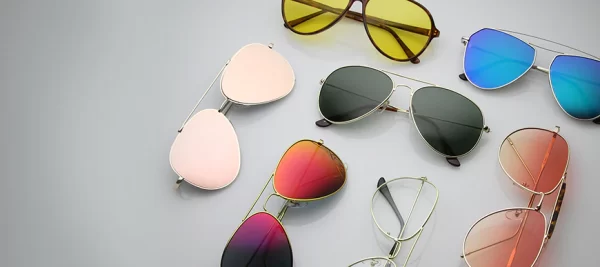brand
Due to its wide range of brands and vertical integration approach, Luxottica has long held a dominant position in the eyewear market. But the eyeglass industry’s competitive environment is changing, with new entrants and long-standing rivals posing a threat to Luxottica’s hegemony. We’ll look at some of Luxottica’s competitors in this article, analyzing their advantages, innovations, and business plans in the dynamic eyewear market.
Luxottica Competitors
Safilo Group
Safilo Group, which was founded in 1934, is among the world’s oldest eyewear producers. The brand has a long history of innovation and skill, even though it isn’t as well-known as Luxottica. The company offers a wide variety of premium eyewear and partners with major labels such as Dior, Fendi, and Marc Jacobs. Safilo is a strong rival in the high-end eyewear market because of its emphasis on design innovation and brand alliances.
EssilorLuxottica
Having merged with Luxottica in 2018, EssilorLuxottica is currently one of the biggest companies in the eyeglasses market. Luxottica contributes its knowledge of fashion and retail eyeglasses, while Essilor is a world leader in the production of ophthalmic lenses and vision care products. The goal of the merger is to combine the two businesses to provide a wide variety of services and goods related to eyeglasses. The combined strength of EssilorLuxottica in frames and lenses presents a serious threat to rivals in the industry.
GrandVision
GrandVision is a prominent global optical retail firm that operates more than 7,000 outlets across multiple brands, including Vision Express and Pearle Vision. Although GrandVision is not a direct rival of Luxottica in terms of manufacturing, GrandVision’s retail location presents a problem for the company in terms of distribution and eyeglass sales. The company is a major player in the worldwide eyewear market because of its emphasis on providing a large assortment of eyewear brands and vision care services.
Warby Parker
With its direct-to-consumer business strategy and online collection of reasonably priced, fashionable eyewear, Warby Parker upended the eyewear market. When Warby Parker was founded in 2010, it became well-known for its socially conscious business practices, such as its “Buy a Pair, Give a Pair” initiative. Warby Parker’s emphasis on affordability, convenience, and social impact appeals to a distinct subset of consumers and challenges conventional eyewear retail models, even though it doesn’t directly compete with Luxottica’s luxury brands.
Marchon eyewear
Marchon Eyewear is a prominent producer and supplier of high-end eyewear brands, serving a range of consumer demographics. The brand, which offers fashionable and cutting-edge designs, competes with Luxottica in the fashion eyewear market. Its portfolio includes labels such as Calvin Klein, Nike, and Lacoste. Marchon’s emphasis on technology and innovation also guarantees its relevance in a market that is always changing.
Kering eyewear
Kering Eyewear, a division of the Kering Group, manufactures premium eyewear and holds licenses for well-known fashion brands such as Gucci, Saint Laurent, and Balenciaga. The eyewear brand, which competes with Luxottica in the high-end fashion eyewear category, emphasizes sustainability and workmanship, appealing to fashion-forward consumers who value luxury and status.
Independent eyewear brands
An increasing number of independent eyewear companies are becoming more well-known in the industry by providing distinctive styles, eco-friendly manufacturing methods, and customized experiences. These companies frequently concentrate on niche markets, serving certain client tastes and lifestyle selections. Independent eyewear brands add to the industry’s diversity and innovation even though they might not seriously threaten Luxottica’s market share.
Frequently Asked Questions Regarding Luxottica Competitors
1. Who are the main competitors of Luxottica?
The main competitors of Luxottica include Safilo Group, EssilorLuxottica, GrandVision, Marchon Eyewear, and various independent eyewear brands.
2. What sets Luxottica’s competitors apart from each other?
Each competitor of Luxottica brings unique strengths and offerings to the table. For example, Safilo Group focuses on fashion-forward designs and premium craftsmanship, while EssilorLuxottica specializes in ophthalmic lenses and vision care solutions. GrandVision is known for its extensive network of retail chains, Marchon Eyewear emphasizes innovation and brand partnerships, and independent eyewear brands prioritize craftsmanship and authenticity.
3. How do Safilo Group and Luxottica differ in their approach to the eyewear market?
Safilo Group and Luxottica differ in their brand portfolios, distribution channels, and strategic focuses. While both companies offer a range of eyewear brands, The brand’s portfolio includes fashion-forward brands like Dior and Fendi, whereas Luxottica owns a broader range of brands across luxury, sports, and lifestyle categories. Additionally, it primarily distributes its eyewear through third-party retailers, while Luxottica operates a vast network of retail chains.
4. What is the relationship between EssilorLuxottica and Luxottica?
EssilorLuxottica is the result of a merger between Essilor and Luxottica in 2018, creating a vertically integrated company that covers the entire eyewear value chain, from lens manufacturing to frame design and retail distribution. While Luxottica dominates the fashion eyewear segment, Essilor’s expertise lies in lens manufacturing and vision care solutions, complementing Luxottica’s strengths.
5. How does GrandVision compete with Luxottica’s retail dominance?
GrandVision competes with Luxottica’s retail dominance through its extensive network of optical retail chains and stores, offering consumers a wide selection of eyewear brands and vision care services. Additionally, GrandVision’s presence in both developed and emerging markets strengthens its position as a key competitor to Luxottica’s retail empire.
6. What are some examples of independent eyewear brands that compete with Luxottica?
Independent eyewear brands offer unique alternatives to Luxottica’s mass-produced offerings, prioritizing craftsmanship, creativity, and authenticity. Examples of independent eyewear brands include Warby Parker, Oliver Peoples, MYKITA, and Garrett Leight, among others.
7. How do consumers benefit from the competition between Luxottica and its competitors?
Competition between Luxottica and its competitors benefits consumers by providing a diverse range of eyewear options, innovative designs, and competitive pricing. Additionally, competition encourages companies to prioritize customer satisfaction, quality, and innovation, ultimately enhancing the overall consumer experience in the eyewear market.
Final Words
Although Luxottica continues to dominate the eyeglass business, its rivals present strong alternatives and innovative products that put its position as the market leader in jeopardy. The competitive environment of the eyeglasses market is vibrant and varied, ranging from well-established firms like Marchon Eyeglasses and GrandVision to up-and-coming contenders like EssilorLuxottica and Safilo Group. Furthermore, independent eyewear companies enhance the customer experience and advance innovation by bringing a feeling of genuineness and uniqueness to the market. The eyeglass market is always changing, providing consumers throughout the world with exciting chances and options as competition heats up and consumer tastes shift.

Leave a Reply